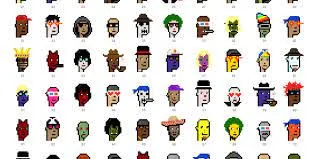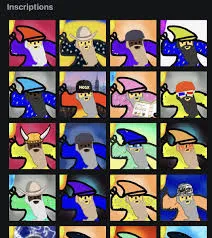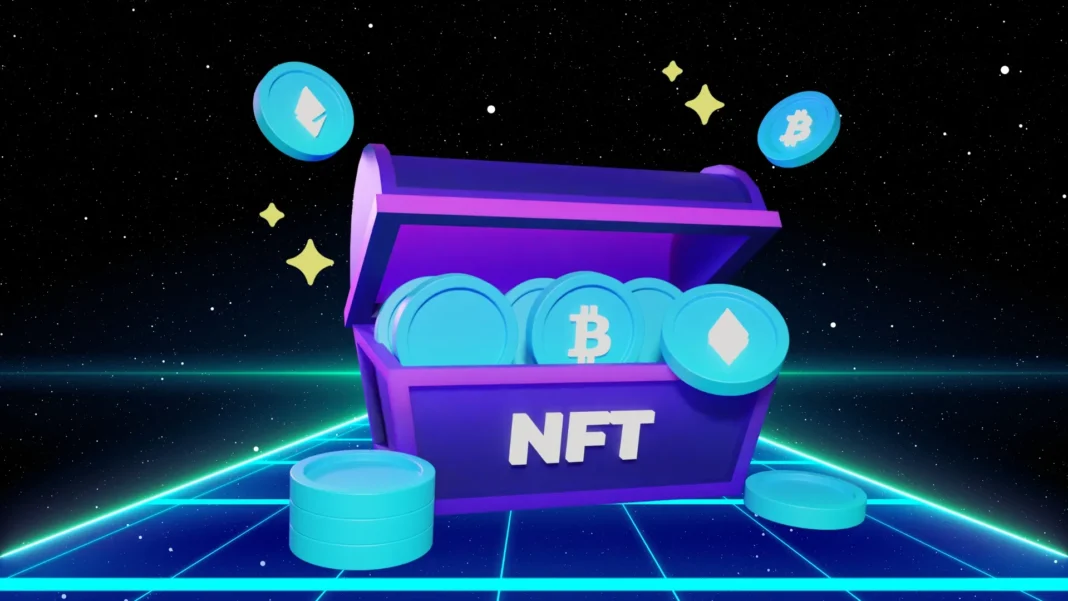- Bitcoin Ordinals have uniquely numbered Satoshis with some inscribed data like text, audio, video, or images.
- Satoshi is the smallest denomination of Bitcoin, with 1 Satoshi = 0.00000001 BTC.
Bitcoins are fungible. This means all the bitcoins are the same as the physical coins we use. Ordinal theory, launched in Jan 2023, allowed the creation of unique and non-fungible Satoshis. The theory, with the Taproot and SegWit updates, laid the foundation for creating Bitcoin Ordinals, popularly called Bitcoin NFTs.
The NFTs We Know Now
Bored Ape Yacht Club (BAYC), CryptoPunks, Mutant Ape Yacht Club (MAYC), and Decentraland are some top NFTs. However, they are all based on the blockchain networks of Ethereum and Solana. They had advanced features of TokenID and Metadata, which supported them. Any changes in Bitcoin’s original code are complicated due to its decentralized nature, and Bitcoin did not have NFTs.
Ordinal Theory
Ordinal Theory was a protocol to identify each Satoshi in the Bitcoin network through numbers. Satoshi is the smallest denomination of Bitcoin, with
1 Satoshi = 0.00000001 BTC.
The idea was to number each Satoshi in the order of their Genesis from the Bitcoin first used in 2009. This made each Satoshi unique compared to others. The numbers are called Ordinal Numbers, with the first Satoshi having an Ordinal number of 0.
Foundation for Bitcoin NFTs
The SegWit and Taproot updates were launched separately and for different purposes. However, they unintentionally laid the foundation for Bitcoin NFTs.
- SegWit: The Segregated Witness update was launched to free up the limited space in a Bitcoin block. Previously, the transaction and witness data were stored on the bit block and used up lots of space. After this soft fork, the Witness data was kept in a separate parallel chain.
- Taproot: A protocol launched to improve the network’s security, scalability, and efficiency.
These two updates made it possible to store more arbitrary data on the block and make it easy to store this data. They together laid the groundwork for Bitcoin Ordinals.
How Bitcoin Ordinals Work?
The concept of Bitcoin ordinals can be understood in steps:
Step1: Creating a unique Satoshi
With the help of Ordinal theory, which numbers the Satoshis, creating a unique Satoshi is possible. This is analogous to TokenID used in NFTs to make each one unique.
Step2: Inscripting the Data
The Satoshi can be inscribed with specific data such as Audi notes, Video Text, and Images. This is analogous to an artist drawing something on a dollar note. This is done while a transaction is in process, and this data is included in its arbitrary data.
Are Bitcoin Ordinals and NFTs the same?
The code of the Bitcoin Network does not recognize the Ordinal Theory. Some bitcoin enthusiasts started numbering the Satoshis, and others, seeing the prospect joined them with innovative ideas that respected the theory.
- An Ordinal is still a Bitcoin implying it can be used for transactions, whereas NFTs are not cryptocurrencies.
- The user has control over whether to value the Ordinal or not. He may ignore or not be interested in the value his Satoshis hold and may use them as before for transactions. Others may preserve them for their intrinsic value.
- Smart contracts can’t be executed on Ordinals, whereas NFTs heavily rely on them for royalties and digital memberships.
- The metadata for NFTs is stored on a separate parallel chain to the primary network. However, all the data for Ordinal is stored on the Bitcoin network only.
Community and Ordinals
The Bitcoin community is both welcoming and brushing off these Ordinals. Some are excited about the cultural richness these will bring to the network. This will lift its reputation from a financial network to a broader definition. Furthermore, as more data is included in a transaction, the gas fee increases. The BTC now has to compete with Satoshis for block space, decreasing transaction speed.
Popular Bitcoin Ordinals
Ordinal Punks: 100 NFTs collection made by using the first 650 inscriptions.

Taproot Wizards: Total supply of 2105 unique wizards.



